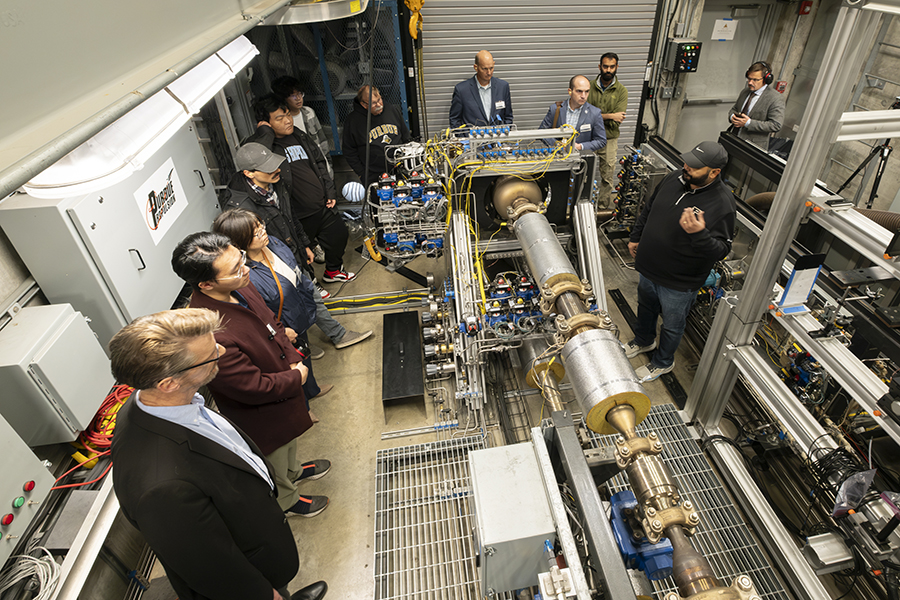How Commercial Aviation Intends to Reduce its Climate Impact: Discussions from the Sustainable Aviation Symposium
| Author: | Shriya Thote and Alan Cesar |
|---|

“Aviation is at a pivotal moment in its history," said Purdue AAE professor Li Qiao. "While it has revolutionized global connectivity and the transportation of goods, it also significantly contributes to climate change."
That challenge is one that the inaugural Sustainable Aviation Symposium at Purdue at Purdue University sought to overcome by bringing together prominent voices from academia, industry, and NASA to share their insights and bold visions. Over two days, attendees delved into the complexities and critical importance of advancing aviation sustainability. Guest speakers explored innovative pathways toward achieving net-zero carbon emissions in commercial aviation, including advanced aircraft designs, alternative propulsion technologies like electrification, efficient airline operations, and sustainable aviation fuels.
Highlighting the importance of incremental advancements, Raul Vazquez, an engineering fellow in aerodynamics and chief of aerothermal technology at Rolls-Royce PLC, emphasized the energy demands of replacing kerosene with sustainable aviation fuel or hydrogen. “If we’re going to replace kerosene with sustainable aviation fuel or hydrogen, we will need more than 20 exojoules – 10 to the power of 18. That’s a massive amount of energy,” he noted. “Improving the efficiency of engines is only going to help.”
James Heidmann, Deputy Director of NASA’s Advanced Air Vehicles Program, stressed that while these incremental improvements are critical, they must be part of a broader strategy. He discussed promising advancements such as electric and hybrid powertrains and the X-66 transonic truss-braced wing experimental plane, the first X-plane dedicated to achieving net-zero greenhouse gas emissions in U.S. aviation. Additionally, speakers addressed the challenges posed by market dynamics and public perception of these developments.
Students attending the symposium found the experience both inspiring and insightful. Purdue ME professor Guillermo Paniagua, who co-organized the event alongside Li Qiao, remarked, “Many students enthusiastically shared how much they enjoyed the event, describing it as an inspiring and eye-opening experience. Over the course of two days, they gained a deeper understanding of the immense challenges ahead but also found motivation in the innovative solutions being pursued."

Held at Purdue’s Composites Manufacturing and Simulation Center, a cutting-edge facility dedicated to advanced aerospace materials and digital twin technologies, the event also featured a poster session where students showcased their research in sustainable aviation. The symposium marked the beginning of an envisioned series of events from Purdue’s Sustainable Aviation Initiative, with future gatherings planned to focus on specific aspects of sustainable aviation.
“The Purdue Sustainable Aviation Initiative seeks to unite researchers, industry leaders, policymakers, and students to collaboratively tackle these urgent challenges,” Qiao said. “This initiative extends beyond research and technological innovation; it is about nurturing a new generation of engineers and decision-makers equipped with a holistic, global perspective to ensure aviation's sustainability and future viability.”
This inaugural event underscores the vital role of collaborative efforts in driving the future of aviation. As Heidmann highlighted, a multi-pronged approach will be essential to meet the ambitious goals needed to reduce the industry’s environmental impact.
Find all the videos from the symposium on our YouTube playlist.
